Rasa 83
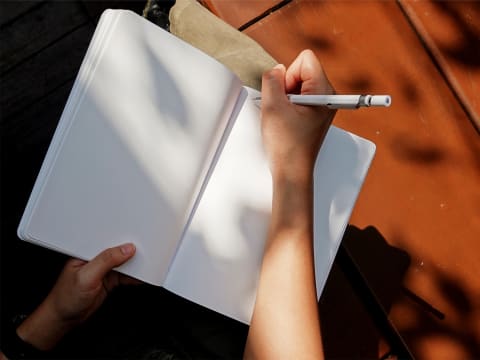
Featuring a paper customised in-house for quick dry times and sharp, clean lines, the Rasa folio notebook is designed for the maximum practicability you need in your everyday workspace.
A new way of thinking about paper for fountain pens
Let's not bury the lede. Say hello to to the atelier's first release under Project Tabula, the culmination of almost a decade's worth of in-house research and development into the properties of fountain pen-friendly paper.
For years now, Musubi as an atelier has championed the idea of taking paper — with all of its chemistry, performance, and corresponding analog foibles — as seriously as a nibmaster might tune nibs, or an ink blender their inks. After all, paper is part of that very trinity which decides how your words and your art look on the page — so why shouldn't it be treated with the same weight? And we've always made clear that there is no one paper for all uses; that your use case defines your choice of paper, and that the paper you pick should fit that use case.
We're not a billion-dollar company with our own paper mill, so our ability to make our own paper is naturally curtailed. But what if we could use our in-house expertise, built over years of learning the ins and outs of how paper works, to modify the very properties that make paper perform one way or another, till we got exactly the right kind of characteristics for the use case we were to specify?
Enter Project Tabula.
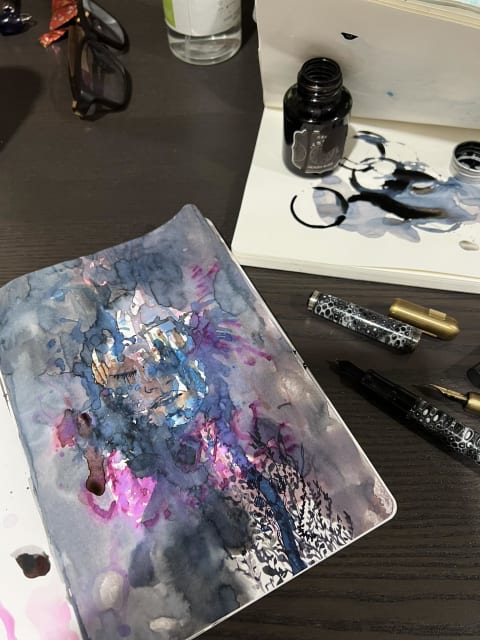
What is Project Tabula? Well, it begins with a base paper made by a traditional, high-quality Japanese mill. We select for certain properties we want to emphasise, for instance colour performance, or ink resistance. But then we begin to modify the bits of it we don't like.
Traditionally, a paper leaving the mill is seen as being in its optimal state, with the goal of any handling following the papermaking process to keep it as stable as possible, and in as similar a condition as possible to the day it left the factory floor. Project Tabula turns that thinking on its head, by treating paper the same way an artist might spike their canvas or a ballet dancer might deform their flats: in other words, we introduce a deliberate, predetermined set of stressors designed to shape this base paper into a customised tool.
From the chemical composition of the ink used to print the rulings on our notebook pages, to the pressure on the finishing rollers used to smooth the papers before binding, to the intentional gradation of high and low humidities in specific sequences to alternately modify the brittleness and suppleness of a paper's internal fibres; we test through various conditions in order to develop a proprietary set of customisations and handlings unique to every base paper. The aim is to make each paper in this project perform optimally to a single, specific set of requirements — the use case we mentioned earlier.
The end result? A hyperspecific paper in each release, built upon a reliable platform, then tuned to a particular group of users who seek the perfect fit for their needs.
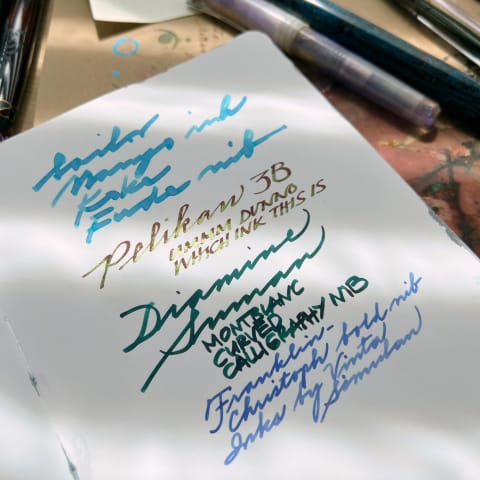
On the properties of modern Japanese microcoat
For its first research and development project under the Tabula framework, the atelier turned to that style of paper now ubiquitous in modern fountain pen-friendly notebook making: the modern Japanese microcoat.
Cosmo Air Light, and many of the other variants of this style of paper, are popular on the market today, and for good reason. They exhibit little bleedthrough despite their incredible colour performance, bringing out the shading and sheen you want to see in your multichromatics and other unique inks.
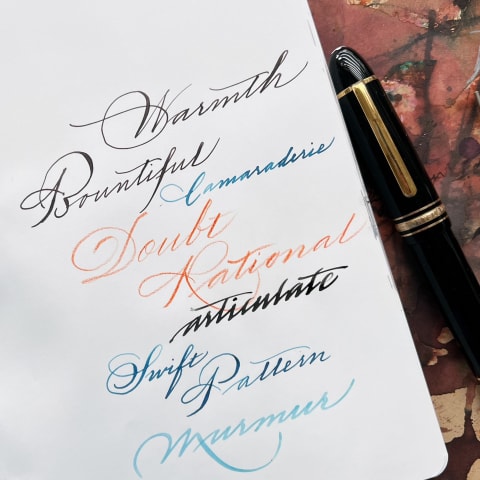
But this style of papermaking has some weaknesses we've not always been comfortable with. Dry times are typically glacial. Lines spread out and widen slightly on microcoat in a way those with finer nibs may not appreciate. And the coating itself, so critical to the wild colour performance of inks on this style of paper, is exceptionally susceptible to hand oils and smears, making it a finicky choice for the kind of daily beater notebook you'd want for work and study alike.
Our answer to these issues, and the very first in-house customised paper from the atelier, is Musubi Rasa: a modified version of a modern Japanese microcoat paper that trades off a small amount of colour performance in exchange for a huge boost to usability.
rasa (rah-sah): feel, in Straits Malay
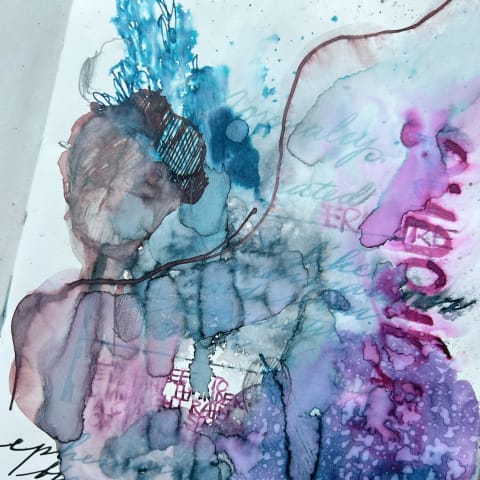
Rasa at work
The issue of resistance to hand oils begins with the composition of the surface coating, so we start with a variant microcoat paper that has more inherent resistance to oils than Cosmo Air Light.
We then use humidity shock and other techniques to force the paper's fibres to become more receptive to ink absorption, thus shortening dry times, before holding the paper at a different state for an extended period to allow the fibres to settle.
The resulting paper is slightly drier in handfeel, significantly more absorptive of applied media, and — while still not immune to oils — inherently more resilient to the vagaries of the human palm, making it the perfect choice for your daily meetings, classes, and other rather serious endeavours.
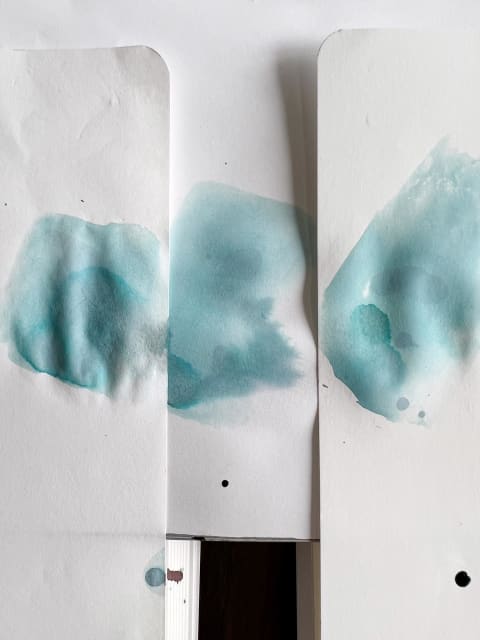
From left: Tomoe River 7, Rasa, Cosmo Air Light.
Win some, lose some
Of course, improvements to some elements of the paper mean tradeoffs in others, so we want to make sure you're aware of this paper's weaknesses.
The core tradeoff is slightly reduced colour performance. You'll find that certain multichromatic inks, in particular, will be slightly duller on Rasa than they would be on Cosmo Air Light and other microcoat equivalents — this stems from the drastically increased rate at which the paper absorbs ink. Given that this paper is primarily oriented towards work and study use, we felt this was an appropriate hit to take for increased practicability.
This isn't to say, of course, that colours look completely flat. You can still get some astonishing results with a little practice:

The paper's quicker dry and increased resistance to hand oils also comes at a cost: if your weapons of choice are sharp italics, or edged blades and scrapers, Rasa presents a slightly odd, squishy handfeel and increased feedback that may make writing and calligraphing feel a little strange. This doesn't affect the paper's ability to handle these nibs, but it will take some getting used to.
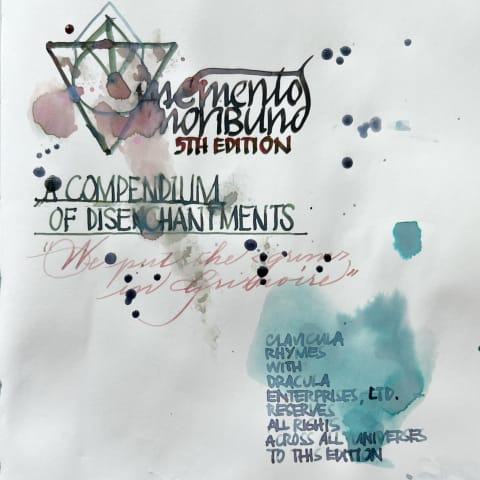
An ever-present companion
The Rasa folio notebook, like all its compatriots, is bound in Japan by a small, family-owned bindery, bringing you the same incredible build quality you're used to in our other folio notebook offerings.
A deep blue bookbinding cotton and an almost-invisible debossed logo on the front cover keep the attention squarely on your work and not your tools, while an ample 208 pages of our new Rasa paper hold everything from your shopping lists to that unfinished novel to your plans for that end-of-year holiday. And all that paper is kept in check by a Smyth-sewn binding, not glue — so it lies flat when open, just like our signature handbound journals.
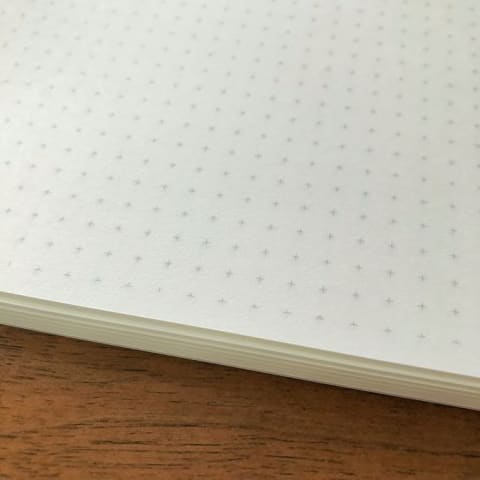
Design is in the details
And, as usual, we didn't skimp on the internals, either. The atelier's renowned attention to detail comes through in our unique lined and cross grid paginated rulings, speciifically created to provide maximum usability and flexibility to your workspace.

Our lined ruling features 7 mm lines, with markers on the top and bottom edges to help you quickly find the midpoint, thirds and fourths of each page.

Our paginated cross grid is designed from the ground up with thoughtful integrations that add utility and maximise readability:
- crosses 1.2 mm wide, spaced 5.12 mm apart;
- small triangles on all four edges marking the middle of each edge;
- page numbers on the bottom outer edge of each page;
- an X in the very centre of the grid, for centring graphs and drawings; and
- dashes every five rows on the vertical edges, which function as line counters.
Use these delineators to set your page up for bullet journalling, add Cornell margins, or simply draw graphs and charts — they're subtle enough to stay out of your way but be there when you need them. The freedom is yours.
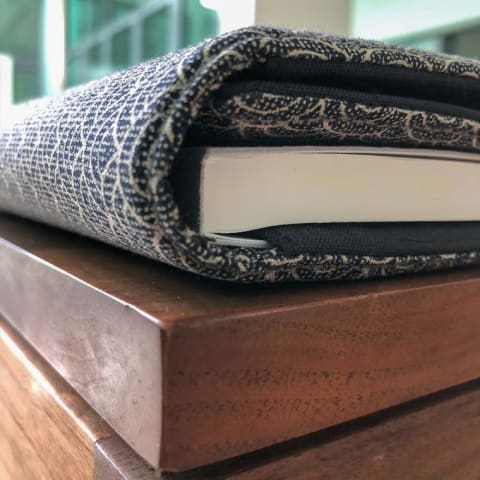
The Tomo system: designed for life
Our folio notebooks are a component of the atelier's signature Tomo system: a swappable, refillable combination of covers, notebooks and notepads designed to be your constant companion for the everyday.
Socially conscious craftsmanship
Proceeds from the sale of these notebooks help fund the atelier's social impact work on disability employment and support for indigenous communities around the world.